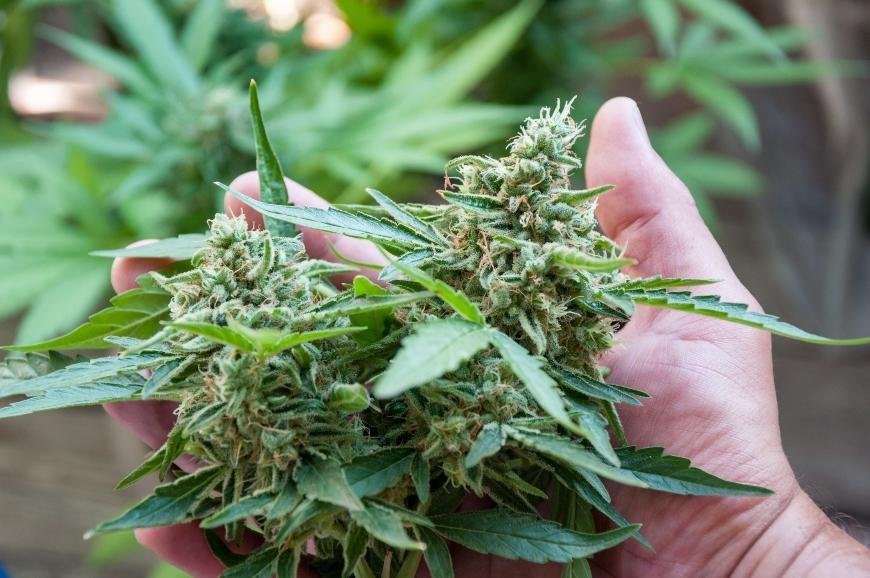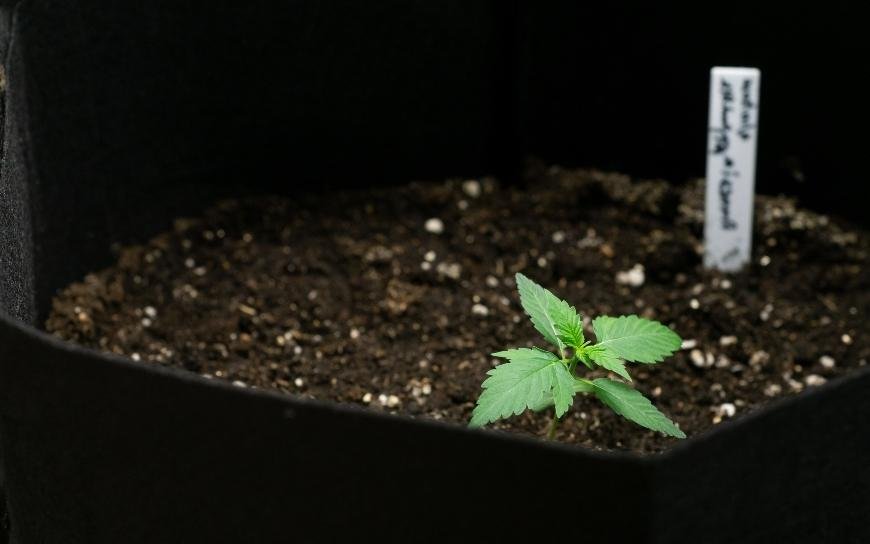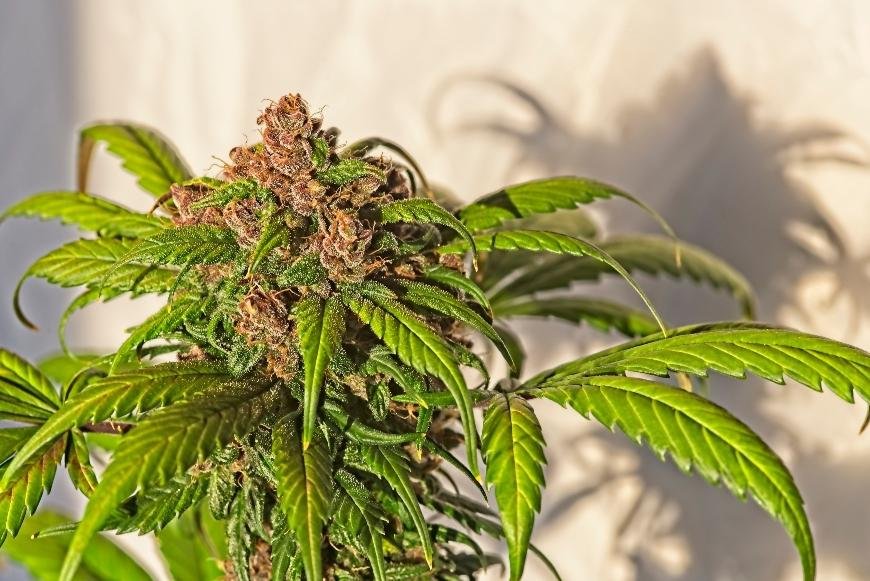Which Nutrients Does Autoflowering Cannabis Need?
Learn which nutrients autoflowering cannabis needs for optimal growth. Get essential tips on fertilizers, pH levels, organic nutrients & more!

When it comes to understanding which nutrients autoflowering cannabis needs, there's a lot more to consider than simply feeding your plants. In this blog post, we will dive deep into the world of autoflowering cannabis plants and their unique nutritional requirements. From fertilizers to pH levels, organic and microbial-based nutrients, flushing before harvest, and much more - you'll learn everything you need to know about providing optimal nutrition for your precious marijuana plants.
Autoflowering strains have distinct advantages over photoperiod cannabis; however, they also require special attention when it comes to nutrient schedules and growing techniques. By following our expert tips on growing autoflowers with proper care in terms of nutrients needed by these fast-growing beauties, you can ensure healthy growth and maximum bud production from seedling phase all the way through flowering stage.
Table of Contents:
- Understanding Autoflowering Cannabis Nutrient Requirements
- Differences Between Autoflowering and Photoperiod Cannabis Strains
- Fertilizers for Autoflowering Cannabis
- Monitoring pH Levels
- Organic and Microbial-Based Nutrients
- Flushing Before Harvest
- Benefits of Autoflowering Cannabis
- Tips for Growing Autoflowering Cannabis
- Frequently Asked Questions Which Nutrients Does Autoflowering Cannabis Need?
- Conclusion
Understanding Autoflowering Cannabis Nutrient Requirements
Autoflowering cannabis plants have unique nutrient requirements compared to their photoperiod counterparts. Due to their shorter life cycle, autoflowers require specific nutrients in different ratios compared to photoperiod cannabis strains. As a result, these plants need specific nutrients in different ratios during their growth stages.
Differences Between Autoflowering and Photoperiod Cannabis Strains
- Growth Stages: Unlike photoperiod strains that require changes in light cycles to transition from vegetative growth to flowering, autoflowers automatically switch into flowering after a certain period regardless of light exposure. This means they have less time for vegetative growth and need more efficient nutrient uptake.
- Nutrient Sensitivity: Autoflowers are generally more sensitive to overfeeding than photoperiod strains. Overdoing it with nutrients can lead to various issues such as nutrient burn or lockout, stunted growth, or even plant death.
- Nitrogen Needs: During the vegetative stage, both types of cannabis plants require nitrogen for healthy leaf development; however, autoflowers typically need lower amounts since they spend less time in this phase.
- Blooming Boosters: When transitioning into the flowering stage, phosphorus (P) and potassium (K) become essential for bud formation and overall yield improvement. While both types benefit from increased P-K levels during this stage, autoflowers may require slightly higher ratios during their brief but intense blooming period.
It is important to understand the nutrient requirements of autoflowering cannabis in order to ensure optimal growth and yield. With this knowledge, it's now time to explore which fertilizers are best for providing these nutrients.

Fertilizers for Autoflowering Cannabis
Choosing the right fertilizers for your autoflowering cannabis plants is crucial to their overall health and yield. Since these plants have a shorter life cycle, they require specific nutrients in different proportions compared to photoperiod strains. Here are some key points to consider when selecting fertilizers:
High Phosphorus and Potassium Content
Autoflowers need higher levels of phosphorus (P) and potassium (K) during their flowering stage, as these elements promote bud development and enhance flavor profiles. Look for fertilizers with a high P-K ratio or opt for specialized cannabis-specific nutrient blends. However, be cautious not to overfeed your plants; excessive amounts can lead to nutrient burn.
Nitrogen Levels
In contrast, autoflowers require less nitrogen (N) than photoperiod strains due to their rapid growth rate. Too much nitrogen can cause excess foliage growth at the expense of bud production. Opt for balanced N-P-K ratios during the vegetative stage but reduce nitrogen intake once flowering begins.
Avoid Overfeeding
- Start with lower doses: Begin by feeding your autoflowers half of the recommended dosage on fertilizer labels since they are more sensitive to nutrient imbalances.
- Maintain consistency: Stick with one brand or line of nutrients throughout the entire grow cycle - this ensures consistent results without unexpected reactions between products.
- Monitor plant response: Observe how your plants react after each feeding session - if you notice signs of nutrient burn, such as yellowing or curling leaves, reduce the dosage accordingly.
Water-Soluble Nutrients
Autoflowering cannabis plants prefer water-soluble nutrients that can be easily absorbed by their roots. Liquid fertilizers are an excellent choice since they provide immediate access to essential elements and allow for precise control over dosages. Alternatively, consider using water-soluble granular products that dissolve in water before application.
It is important to use the right fertilizers for autoflowering cannabis in order to ensure that your plants are getting all of the nutrients they need. Checking pH levels and ensuring that the soil has an adequate balance is essential for successful autoflowering cannabis cultivation.
Monitoring pH Levels
Growing autoflowering cannabis requires a keen eye on the pH levels of your growing medium. The pH of the medium should be kept between 6.0 and 7.0 for ideal development, enabling your cannabis to take in nutrients adequately and flourish in its environment. Monitoring and adjusting the pH levels accordingly can significantly impact your plant's overall health, growth rate, and yield.
To measure the pH level of your soil or hydroponic system, you can use a pH meter or test kit. These tools are essential for any serious grower looking to maximize their autoflowering cannabis yields.
Why Is It Important To Monitor And Adjust The PH Level?
- Nutrient absorption: Autoflowers need specific nutrients at different stages of their life cycle; however, nutrient uptake heavily depends on the right pH level. If it falls outside this range, certain nutrients may become unavailable to your plants leading to deficiencies or toxicities.
- Better root development: A balanced pH encourages healthy root growth by providing an ideal environment for beneficial microorganisms that support strong roots systems.
- Faster recovery from stress: Maintaining proper pH levels helps reduce stress on your plants caused by fluctuations in temperature or humidity making them more resilient throughout their short life cycle.
Tips For Maintaining Optimal PH Levels In Your Grow Medium
- Regularly check the pH: Test your growing medium's acidity every few days using a reliable testing method like digital meters or color-coded strips available online or at your local gardening store.
- Adjust pH levels as needed: If the pH is too high or low, use pH up or down solutions to bring it back within the optimal range. Make sure to follow product instructions and avoid overcorrection.
- Maintain a stable environment: Keep temperature and humidity levels consistent in your grow space to minimize fluctuations that can affect pH balance.
- Rinse growing medium before use: If using soil, coco coir, or other substrates, make sure to rinse them thoroughly with water adjusted to the correct pH level before planting your autoflowering cannabis seeds. This helps ensure an ideal starting point for growth.
Keeping tabs on pH is essential for the successful cultivation of autoflowering cannabis, as it guarantees that the plants have access to all necessary nutrients. With this in mind, we will now move on to discussing organic and microbial-based nutrients for autoflowering cannabis.
Organic and Microbial-Based Nutrients
When it comes to growing autoflowering cannabis, using organic and microbial-based nutrients can greatly benefit your plants. These types of nutrients help create a healthy soil environment that promotes better plant growth, increased yields, and improved overall health for your cannabis plants. In this section, we'll explore the advantages of utilizing organic and microbial-based nutrients for autoflowering cannabis growth as well as some recommended products to consider.
The Advantages of Organic Nutrients
- Natural Ingredients: Organic fertilizers are made from natural ingredients like bone meal, fish emulsion, kelp extract, or worm castings. This means they're free from synthetic chemicals that may harm your plants or the environment.
- Better Soil Health: Using organic nutrients helps improve soil structure by increasing its water retention capacity and promoting beneficial microorganisms' growth in the root zone.
- Sustainable Practices: Choosing organic options supports sustainable agriculture practices that reduce environmental pollution caused by chemical fertilizers.
- Taste & Flavor: Many growers believe that organically grown cannabis has a superior taste and flavor compared to those grown with synthetic fertilizers due to their gentle effect on plant metabolism.
The Benefits of Microbial-Based Nutrients
- Faster Growth: Incorporating microbes into your nutrient regimen can speed up plant growth rates by helping roots absorb essential elements more efficiently. Mycorrhizal fungi form symbiotic relationships with plant roots which increase nutrient uptake while also protecting against pathogens. Studies have shown that mycorrhizal fungi can increase cannabis yields and overall plant health.
- Bioavailability: Microbial-based nutrients help make essential elements more bioavailable to your plants, ensuring they receive the necessary nutrients for optimal growth and development.
- Pest & Disease Resistance: Beneficial microbes can also boost your plants' natural defenses against pests and diseases by producing enzymes or other compounds that deter harmful organisms from attacking them.
Flushing Before Harvest
As your autoflowering cannabis plants approach the end of their life cycle, it's crucial to flush them with plain water to remove excess nutrients from the soil. This process helps prevent harsh flavors in the final product and ensures a smoother smoking experience. In this section, we'll discuss why flushing is essential and how to do it effectively.
The Importance of Flushing Autoflowers
During their growth, cannabis plants absorb various nutrients that help them develop strong roots, leaves, and buds. However, if these nutrients remain in the plant at harvest time, they can negatively impact its taste and overall quality. By flushing your autoflowering cannabis plants before harvest:
- You eliminate any residual salts or chemicals from synthetic fertilizers.
- You promote a cleaner burning final product by reducing nutrient buildup in plant tissues.
- You improve the taste and aroma of your harvested buds by allowing natural terpenes to shine through without being masked by excess minerals or chemicals.
How to Flush Your Autoflowering Cannabis Plants
To properly flush your autoflowers before harvest, follow these simple steps:
- Determine when to start flushing: Begin flushing approximately one week before you plan on harvesting for strains with shorter flowering times (around eight weeks), while longer-flowering strains may require up to two weeks of pre-harvest flushing.
- Stop feeding additional nutrients: Discontinue adding any fertilizers or supplements during this period; only use pH-balanced water for watering your plants throughout the entire flush phase.
- Water generously: Water your plants thoroughly, allowing the excess water to drain out of the bottom. This helps flush away any residual nutrients in the soil. Be careful not to overwater and cause root rot or other issues.
- Monitor plant progress: Keep an eye on your autoflowers during this time, as they may show signs of nutrient deficiencies (such as yellowing leaves). Nonetheless, these signs should not be a worry as they are typical during flushing.
Taking the time to flush your autoflowering cannabis plants before harvest can significantly improve their taste, aroma, and overall quality. By following these guidelines, you'll ensure that you're providing yourself with the best possible final product from your homegrown autoflowers.
Benefits of Autoflowering Cannabis
Growing autoflowering cannabis has several advantages over traditional photoperiod strains. These benefits make them an attractive option for both novice and experienced growers alike. In this section, we will discuss some of the most notable perks that come with cultivating autoflowers.
Shorter Life Cycle
One significant advantage of growing autoflowering cannabis is its shorter life cycle compared to photoperiod strains. Autoflowers typically take between 8-10 weeks from seed to harvest, whereas photoperiod plants can take anywhere from 12-20 weeks depending on the strain and environmental conditions. This brief maturation period permits cultivators to produce multiple crops in a single year, thereby augmenting their yield.
Easier Maintenance
Autoflowers are generally easier to maintain than their photoperiod counterparts due to their smaller size and resilience against pests and diseases. Their compact stature makes them ideal for indoor grows, as they require less space and resources compared to larger plants. Additionally, since they automatically transition into flowering without needing a change in light schedule, managing your grow becomes much simpler.
Better Yields Per Plant Size
- Density: Despite being smaller in size overall, autoflowering cannabis plants tend to produce dense buds packed with potent cannabinoids like THC or CBD.
- Faster Growth: Due to their rapid growth rate, you can expect higher yields per plant size when comparing similar-sized auto-flowering varieties versus regular ones.
- Multiple Harvests: The ability to harvest multiple times per year means you can maximize your overall yield potential, making autoflowers an attractive option for those looking to grow their own cannabis supply.
Resilience Against Pests and Diseases
Autoflowering cannabis plants are known for their resilience against common pests and diseases that often plague photoperiod strains. This hardiness is due in part to the ruderalis genetics found in most autoflowers, which have evolved over time to withstand harsh environmental conditions. As a result, these plants tend to be more resistant to issues like mold or mildew, reducing the need for excessive pest control measures.
Variety of Strains Available
The popularity of autoflowering cannabis has led breeders worldwide to develop a wide range of strains with varying flavors, aromas, and effects. From high-CBD medicinal varieties like ACDC and Harlequin, all the way up through potent THC-rich options such as Gorilla Glue Auto, there's something available for every type of consumer.
Autoflowering cannabis has many benefits, such as being easy to grow and providing a quick harvest. However, it is important to understand the specific nutrients that autoflowering cannabis needs in order to maximize its potential yield. In this article we will discuss tips for growing autoflowering cannabis successfully.

Tips for Growing Autoflowering Cannabis
Successfully growing autoflowering cannabis requires attention to detail and a good understanding of the plant's unique needs. Here are some essential tips to help you grow healthy, high-yielding autoflowers:
- Provide Adequate Light: Autoflowering plants thrive under a consistent light schedule, usually requiring at least 18 hours of light per day throughout their entire life cycle. Consider using energy-efficient LED lights specifically designed for cannabis growth, such as Kind LED Grow Lights.
- Monitor Temperature: Maintain an optimal temperature range between 68°F (20°C) and 77°F (25°C) during the day and slightly cooler temperatures at night. This helps prevent heat stress while promoting robust growth.
- Control Humidity Levels: Keep humidity levels around 40-60% during vegetative growth and reduce it to around 30-50% during flowering. Use a hygrometer to monitor humidity levels accurately.
- Maintain Proper Air Circulation:Adequate air circulation is crucial in preventing mold or pests from infesting your plants. Make sure there is enough space between each plant and use oscillating fans if necessary.
By following these tips and paying close attention to your autoflowering cannabis plants' needs, you can enjoy a successful harvest with potent buds. Remember that practice makes perfect; experiment with different techniques and learn from each grow cycle to become an expert in growing autoflowers.
Frequently Asked Questions Which Nutrients Does Autoflowering Cannabis Need?
Which nutrients do Autoflower cannabis need?
Autoflowering cannabis requires a balanced mix of macronutrients, including nitrogen (N), phosphorus (P), and potassium (K), as well as micronutrients like calcium, magnesium, and sulfur. Additionally, trace elements such as iron, manganese, zinc, copper, boron are essential for optimal growth.
What do you feed Autoflower cannabis?
Feed autoflowering cannabis with nutrient-rich solutions specifically designed for the plant's vegetative and flowering stages. Use fertilizers containing higher levels of nitrogen during early growth stages and switch to a phosphorus- and potassium-rich fertilizer during the flowering stage. Also ensure adequate micronutrient supply throughout its life cycle.
What fertilizer to use for Autoflowers?
For autoflowers, use specially formulated cannabis-specific fertilizers. Choose a product that provides an appropriate N-P-K ratio depending on the plant's stage: high in nitrogen during vegetation phase; higher in phosphorus and potassium when transitioning into flowering.
What is the best soil and nutrients for Autoflower?
The best soil for autoflowers should be light-textured with good drainage properties like coco coir or peat-based mixes. Nutrient-wise, organic slow-release granular fertilizers, liquid feeds tailored to each growth stage or organic amendments like worm castings, bat guano, and bone meal are ideal choices.
Conclusion
Autoflowering cannabis requires a specific set of nutrients to grow and thrive. By understanding the fertilizers, pH levels, organic and microbial-based nutrients, and flushing techniques needed for autoflowering cannabis, growers can produce high-quality yields with minimal effort.
If you're interested in growing your own autoflowering cannabis plants, be sure to do your research on which nutrients they need. With the right knowledge and tools at hand, you'll be able to cultivate healthy plants that will provide an abundance of buds.





















































































































